So I have a table that that tells the freq (N) of two variables (V1 and V2) appearing together. Here is a sample:
> dput(ans)
structure(list(V1 = c(2L, 7L, 7L, 7L, 7L, 7L, 9L, 9L, 9L, 10L,
10L, 11L, 12L, 12L, 13L, 13L, 13L, 13L, 13L, 13L, 13L, 14L, 14L,
14L, 14L, 15L, 15L, 15L, 16L, 16L, 16L, 16L, 17L, 17L, 17L, 20L,
20L, 21L, 25L, 29L, 29L, 29L, 33L, 35L, 38L, 42L, 46L, 46L, 46L,
46L, 46L, 46L, 46L, 46L, 46L, 46L, 46L, 46L, 47L, 47L, 48L, 52L,
52L, 52L, 52L, 52L, 56L, 56L, 56L, 56L, 56L, 56L, 56L, 57L, 57L,
57L, 57L, 57L, 57L, 58L, 58L, 58L, 58L, 58L, 59L, 59L, 59L, 59L,
60L, 60L, 60L, 61L, 61L, 62L, 65L, 65L, 65L, 65L, 67L, 67L, 67L,
68L, 70L, 70L, 71L, 73L, 73L, 74L), V2 = c(3L, 8L, 20L, 21L,
22L, 78L, 10L, 11L, 12L, 11L, 12L, 12L, 38L, 39L, 14L, 15L, 16L,
17L, 18L, 29L, 64L, 15L, 16L, 17L, 18L, 16L, 17L, 18L, 17L, 18L,
29L, 30L, 18L, 29L, 30L, 21L, 22L, 22L, 26L, 30L, 47L, 64L, 34L,
36L, 39L, 43L, 47L, 48L, 49L, 52L, 65L, 67L, 70L, 71L, 72L, 73L,
74L, 75L, 48L, 49L, 49L, 65L, 67L, 73L, 74L, 75L, 57L, 58L, 59L,
60L, 61L, 62L, 63L, 58L, 59L, 60L, 61L, 62L, 63L, 59L, 60L, 61L,
62L, 63L, 60L, 61L, 62L, 63L, 61L, 62L, 63L, 62L, 63L, 63L, 67L,
73L, 74L, 75L, 73L, 74L, 75L, 69L, 71L, 72L, 72L, 74L, 75L, 75L
), N = c(1L, 1L, 1L, 1L, 1L, 1L, 1L, 1L, 1L, 1L, 1L, 1L, 1L,
1L, 1L, 1L, 1L, 1L, 1L, 1L, 1L, 1L, 1L, 1L, 1L, 1L, 1L, 1L, 3L,
1L, 1L, 1L, 1L, 1L, 1L, 1L, 1L, 1L, 1L, 1L, 1L, 1L, 1L, 1L, 1L,
1L, 1L, 1L, 1L, 1L, 1L, 1L, 1L, 1L, 1L, 1L, 1L, 1L, 1L, 1L, 1L,
1L, 1L, 1L, 1L, 1L, 1L, 1L, 1L, 1L, 1L, 1L, 1L, 1L, 1L, 1L, 1L,
1L, 1L, 1L, 1L, 1L, 1L, 1L, 1L, 1L, 1L, 1L, 1L, 1L, 1L, 1L, 1L,
1L, 1L, 1L, 1L, 1L, 1L, 1L, 1L, 1L, 1L, 1L, 1L, 1L, 1L, 1L)),
row.names = c(NA, -108L), class = c("data.table", "data.frame"))
I want to convert it to a 696x696 matrix where I have V1 and V2 as the rows and columns (from 1-696 in both rows and columns), and N as the values. V1 and V2 represents materials in my dataset. If a V1 and V2 combination does not exist in the table, the value should be 0. This is because I want to cluster the materials based on their freq of appearing together, using the hclust with centroid function.
EDIT: Only way I can give an example of the expected output is a picture from an article i'm following:

